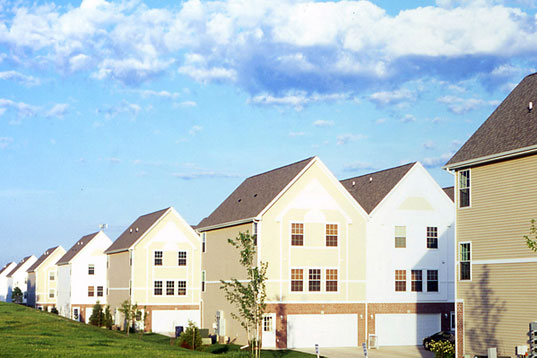Suburbia: Where America Lives
February 11, 2009 9:46 PM

For CBS News Sunday Morning, Correspondent Richard Schlesinger talks to an expert on suburbia and two people who were in on it from the beginning.
“Really, when we talk about the suburbs, we’re talking about America now, because we are now a suburban nation in the sense that really more people live in suburbs than live in cities and rural areas combined.We really are a totally suburban nation.”
So says Ken Jackson of Columbia University, who has been studying the suburbs for 30 years and who has even written a book about them, The Crabgrass Frontier.
“Most historians would say that up until 1920, we were a rural nation; in 1920, we became a predominantly urban nation, and that lasted for 40 or 50 years.”
A predominantly urban America didn’t last long. World War II changed it all. Boatloads of American GIs returned from the war, but they couldn’t go home. The Great Depression and then the urgencies of war had brought housing construction to a standstill.
About 15 million returning GIs, their wives and the baby boom that followed crowded in with relatives and friends, anywhere they could. And American turned its attention from Hitler to housing.
The conditions were just right for someone to build a lot of houses, make a lot of money and change the face of America. That one person was himself a GI, who had an eye on the future even as the war was raging.
More than almost anybody, William Levitt decided what the future would look like.
“Sitting out in the Pacific with the Seabees in the U.S. Navy, we used to sit around,” he recalls. “And I remember distinctly saying to a lot of fellow officers there, ‘When this war is over, you beg, borrow, or steal whatever you can and build housing, because there’s going to be a huge backlog.'”
“It was simple economics,” he adds. “People needed roofs over their heads, and there weren’t any roofs being built.”
Levitt bought a bushel of potato fields on New York’s Long Island and started building more houses than anyone thought possible, more quickly than anyone thought possible.
He built 17,000 houses in just five years and called his instant town Levittown.
Historian Jackson explains, “People are practically living in refrigerators. They’re doubling up with parents, grandparents, and here along comes Levitt, offering a new house, a Bendix washer, for probably less money than they’re paying for rent. It was probably the best deal in American history.”
Suburbia was born, and people like Polly Dwyer couldn’t wait to move in. “I lived with my mother-in-law,” she says with a laugh. “You could see why I was overjoyed coming to this house!”
At the time, it was a kind of way-out idea. All the houses were basically the same – built for speed, not for looks. There were five models, slightly different on the outside, identical on the inside.
The image of the suburbs was of this happy plce: Leave It to Beaver, Life With Father and Ozzie and Harriet; the paper boys throwing the thing on the front porch; Mom is there, baking apple pies and sending the kids off to school in the morning; Dad comes home with the hat. Everything is terrific. That’s the image.
Jackson says suburbs are still growing rapidly in the United States, and spreading so far and fast that people have come up with a new word for it: sprawl.
Dwyer realizes she’s part of history now. She’s curator of the Levittown Historical Museum. It’s a museum, in part, about herself, telling the story of her life.
The funny thing about history is sometimes you hardly know it’s happening.
“We were so busy that we didn’t have time to think that we were or were not making history,” recalls Levitt.
Says Dwyer, “I didn’t see the overall picture of it. I just saw my neighborhood, the stores, the pool, and I was just happy with that. But I didn’t know I was living history. It was just a place for us to live and a happy place.”
Copyright 2009 CBS. All rights reserved.
Read more: http://www.cbsnews.com/8301-3445_162-197424.html#ixzz1dn1XRx9J